#fire conlang
Explore tagged Tumblr posts
Text
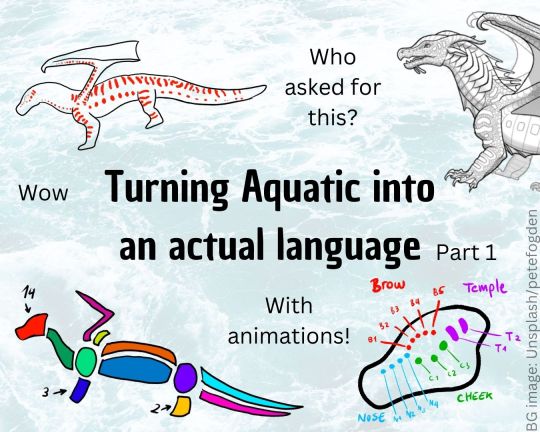
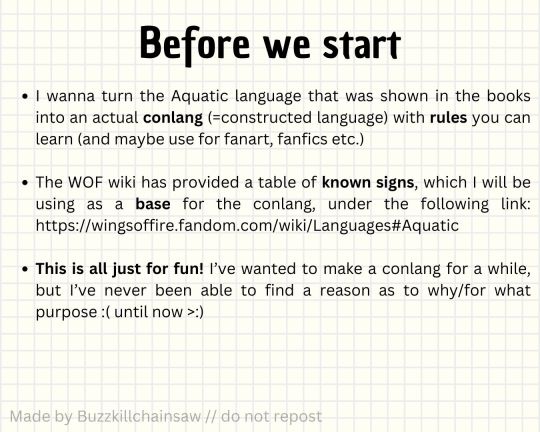
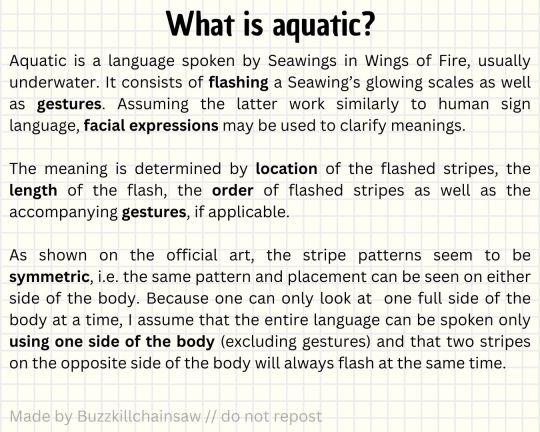
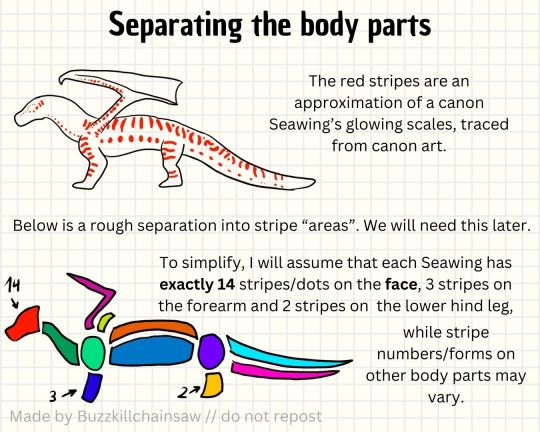
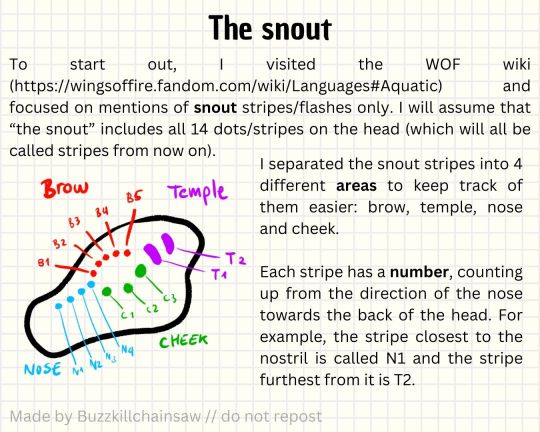
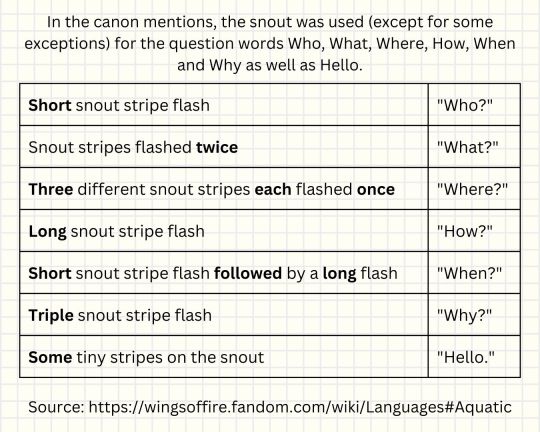
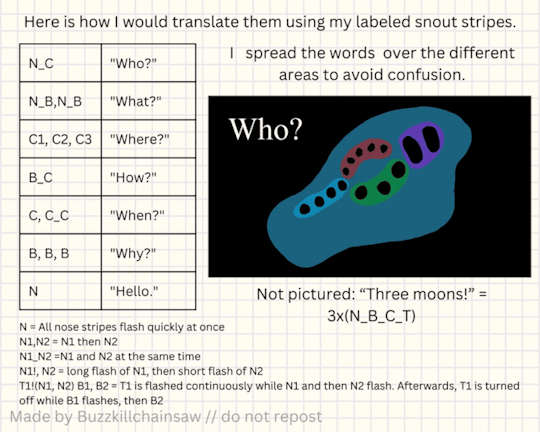
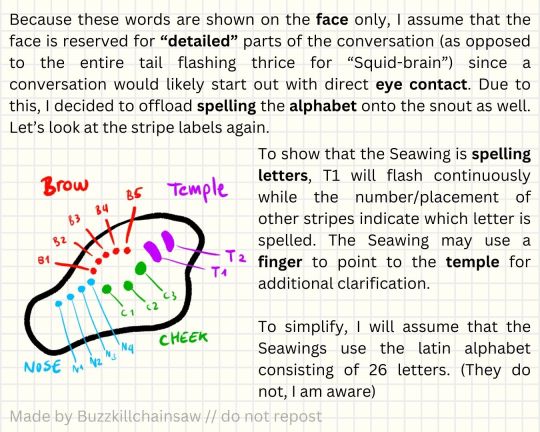
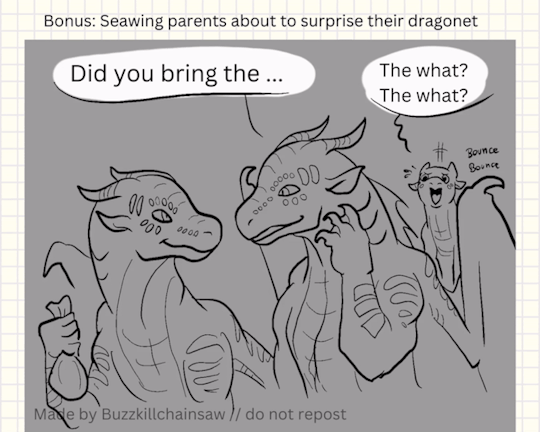
Yes I'm serious, no I'm not okay
(I'll be tagging this and further parts as #buzzkill aquatic so feel free to use that tag too if you use my aquatic expansion in your art/animations/fanfics etc)
Next part (tail edition):
#buzzkill aquatic#wof#wings of fire#seawing wof#wof seawing#seawing#aquatic#conlang#dragon#lore#worldbuilding
5K notes
·
View notes
Text
Someone on Reddit asked about a name like "Star Eater" in Valyrian for a dragon and I wanted to share my response here, as well.
*****
If you want my 2¢ on this, names like Star Eater, Moon Racer, Sun Chaser, etc. are good examples of Common Tongue dragon names, but not good examples of Valyrian dragon names. In the Common Tongue (a.k.a. English) it's easy to put together compounds and come up with names. This is much, much less likely to happen in Valyrian. You can do it, but, frankly, it sounds clunky and awkward.
To give you a real world example of this, here are some Song of Ice and Fire names translated into Spanish:
Storm's End: Bastion de Tormentas
King's Landing: Desembarco del Rey
Rattleshirt: Casaca de Matraca
The translators are trying their best, but these translations simply do not (a) convey the sense you get from the English, or (b) come off as natural-sounding Spanish names. This is exactly what you get when you translate things like "Moondancer" or "Dark Sister" into Valyrian.
A more natural way to create a Valyrian name that sounds Valyrian is to start with your target word and embellish it. If you start with qēlos you might get Qēlazmia or Qēlalbrion, both of which might be kind of clunkily translated into English as "Great Star". In truth, there's no way to capture the sense of it with a single word in English because our morphology works differently. You'd have a better shot in Spanish (maybe Estrellona).
If you wanted to translate "Star Eater" literally, it'd be something like Qēlosipradaros. It is quite literally "star-eater", but it doesn't look like a Valyrian name. Think about all the Valyrian names you see in the book—for dragons and people: Daenerys, Aegon, Viserys, Meraxes, Aemon, Aenys, Rhaegar, Jaehaerys, Helaena, Rhaenyra, Daemon… They don't look that big. They don't look like compounds. They can essentially be broken down into three parts: (1) the main semantic content piece, (2) the augment (optional), and (3) the ending. Daemon, for example, looks about as basic as a Valyrian name gets. You have part (1) daem and part (3) -on. We see the ending -on a lot, so we know it's an ending, as opposed to -mon, for example. Daeneryslooks a little bigger, so you have part (1) daen, part (2) -er, and part (3) -ys. That is as big and complex as a Valyrian name gets.
If you look at the list of known dragons, the only time you see the English-y names for dragons are afterAegon's Conquest. And this makes sense. Once they're living in Westeros, the Targaryens start adopting Westerosi customs more and more: their language, their religion, their day-to-day practices... The younger Targaryens are essentially Common speakers that Valyrian as a heritage language. It makes sense that they'd name their dragons in the Common Tongue. There are a still a few Valyrian names mixed in, but that's also to be expected, depending on whether they want to honor their family's heritage or do something new that speaks to them.
In short, it doesn't make sense to render the Common Tongue names in Valyrian as they were never Valyrian to begin with. I'd say if you like the meaning "Stareater", do it in English. If you want a Valyrian name, build it up in a Valyrian way.
#conlang#language#valyrian#high valyrian#onomastics#asoiaf#got#game of thrones#hotd#house of the dragon#song of ice and fire#daenerys#rhaenyra#daemon#viserys#aegon#targaryen
643 notes
·
View notes
Photo

#lol#valar morghulis#valar dohaeris#Hello My Baby#A Song of Ice and Fire#ASOIAF#Game of Thrones#GoT#House of the Dragon#HotD#High Valyrian#conlangs#funny#I was looking up Reddit threads with people talking about the DuoLingo High Valyrian course#and I came across this absolute gem#I cannot believe how well it scans#I will be singing this for _days_
1K notes
·
View notes
Text
WoF Worldbuilding: Languages

The languages of Pyrrha and Pantala! The modern Latin alphabet is the equivalent for scavenger.
Pyrrhan script is more sharp and angular, with some letters being disconnected or made of of hashes. When being written, the letters don't usually touch.
In comparison, the Pantalan language is much more curved, with looped portions that close back in on each other in a single motion. When written, the letters often touch, like in cursive.
Regardless of language, individuals may have different styles of writing. Some Pyrrhan individuals may have a connected script, while some Pantalan dragons may write with their letters disconnected (though this is extremely rare to make it to adulthood). Some angles may be more rounded, or rounded portions more angular.
Not much is known about scavenger letters, but it's though that Sky of the SkyWings could read it, the same way his friend, Wren of the Scavengers, could read and speak Pyrrhan and he himself could speak Scavenger.
#sotw au#wof#wof au#wings of fire headcanon#wings of fire headcanons#pyrrhan language#pantalan language#pyrrha#pantala#language#conlang#scavengers#scavengers language
85 notes
·
View notes
Text
Super nerdy of me but like,,, I like Wings of Fire,,, and I like making fictional languages,,,,,,, what is stopping me from making cool dragon languages hmmmmmm
There are some things to worry about like “oh how would all the characters understand each other since different tribes prob had different languagesss” but it wouldn’t be much of a stretch to think there was some sort of prestige language,,, maybe the sky wing language (maybe call it sky-speak?) was the language cuz i would assume they traded with most tribes
I love worldbuilding and languages so I might think about this more and try to flesh out the dynamics of all the languagesss
42 notes
·
View notes
Text
On Aenys and pronunciation
Everyone loves to mock poor Aenys [the First, the Abomination] because how do you say that name other than "anus". And, surely, this is what Martin intended but!
I submit to you that we have on-screen evidence of how the "ae" vowel blend is pronounced: during the wedding of Rhaenyra and Daemon, Rhaenyra says, "dah-ee-mon", not "day-mon".
So, although, in the Common Tongue, "ae" is pronounced as blend—"ay"—in High Valyrian, it is two distinct sounds: "ah-ee".
So our King Butthole is, in his own native tonogue, in fact, ah-ee-nys (we can discuss later how that "y" is pronounced), likely a noble sounding Valyrian name, and not anything close to the jokes the commoners surely made about the Abomination king Anus.
I love this because of the difference between what the nobles spoke in England (Anglo Norman) vs. what the peasants spoke (Middle English). Likely, the Maesters would have been at least versant in High Valyrian (perhaps "Maester" is even a High Valyrian word) even if it wasn't their mother tongue, as it was for the Targaryens. And, the further we get from the Conquest, the further away High Valyrian is for even the Targaryens—fewer and fewer people speak it and it is a dead language (see: Latin in medieval England).
#asoiaf#a song of ice and fire#got#game of thrones#fire and blood#high valyrian#pronunciation#conlangs
15 notes
·
View notes
Note
hii!! i just wanna say your comic and starspeak lore are SO cool omg!! the way you incorporate the essence of the starfolk culture into their language is incredibly creative and very fitting auauagahsahdbsnsnn <3
i'm pretty interested in all the grammar of the language!! i think you mentioned that there's a question particle that kind of works like mandarin chinese, do other final particles exist? little tone indicators in the language seems like it would help mutual understanding between a bunch of mystical star-beings :0
also, if it's been developed yet, how do verbs work in this? granted, i don't know a lot about greek/latin languages or if you're basing the grammar off of them too, but does it lean more towards romance language's crazy conjugations, or a simpler "subject verb noun" structure?
sorry if this is a lot haha i know the language is still a wip, but it's such a cool concept! i think languages are really interesting and the way you incorporate it into kirby is so mmbdbbrnzmxfh✨✨
alright, this one took me a very long time to get to (because i knew it would be long and i've been working on it on and off for a while) and i'm so sorry! thank you so much for your patience veve! and it's been a little while since we've had a starspeak post so let's go!
(i will preface by saying again that the language is still very much a wip which i could change at any time, and that i'm no trained specialist; i'm just doing this for fun and there's a high chance i fully have no clue what i'm talking about 😅)

❓ i'll start with the easiest one of these and go for the question particle!
i think that Celestials are not often doubtful or questioning things, but when they do the particle is an opener rather than a sentence-final (such as ma (嗎/吗) in mandarin chinese). it otherwise works extremely similarly in that it is tagged on to turn a sentence into a question.
so the most common starspeak question particle is tc, almost a mouth sound than a word. the letters are a combination not often used elsewhere in their speech patterns, which i like to think also wraps back around to them being fairly certain of most things they open their mouths to say.
tc is predominantly used when seeking clarification about someone else's experiences, which is probably one of the more frequent times they wouldn't know something in (self-presumed) absolution.
combining it with some other things we've learned; épios (see) and eu (you) we can ask someone what they're seeing presently, where the target of the speaker (eu) is in active possession of the seeing action and vl is an active tense:
"tc vlépios eu?" // "(what's) seen (by) you?" // "what do you see?"
unfortunately in the conlangs current state, moving things around even a little bit throws out the meaning of sentences a lot, which is something i could probably iron out more with significantly more time 😅 "tc eu vlépios?" for example would be closer to "you're seen?" and "tc vlépios-eu?" would probably be like.. "what sight possesses you?", which is... still kind of the same i suppose but it's just an unnecessarily intense way to say it 😂
🥰 okay! question particle done and it was not actually the easiest but anyway; onto the personaliser! "ki".
i'm not 100% sure if this sort of thing exists in other languages or what it might be called to begin researching, but it's ostensibly a way to turn an external item or concept into something internal or individualised
asté (star/s) for instance is a very overused word in their language, understandably. you can use it to refer to gaseous bodies, other Celestials, other non-Celestial beings, or even a specific individual rank within a relationship system. ei asté applies an amount of ownership over the star/s, but still does not make them an individual in their own right. you would most likely use this if you happened to be carting around an actual giant flaming ball of gas
ei astéki however immediately makes the star something more personal, a little soul-deep. maybe it's a warm light inside you, or maybe it's the beating heart of another living being. dropping the 'ei' you could use this as a nickname, though it'd be kind of like calling someone 'person'.
"ei astéki skotei koris eu" // "my stars dimmed lacking you" // functionally just a really big ham "i missed you"
🤏 alright rolling on, last one: a diminutive. this one's easier i think; maybe i ought have started here. oh well!
like it says on the tin, this is to make things small and/or cute! the particle is ró and it is usually tacked on at or towards the end of a word. much like in english i think this is usually done affectionately. though it could be done a little pettily or rudely, being small in size is significantly less of a negatively-judged-concept by Celestials than being low in brightness.
here's some examples, probably the easiest way to go about this one! all of these are actively affectionate, not unlike a pet name?
moiydísró - (small) cheeky one astéróki - small star (personaliser; makes this a clear nickname) ei Vaýtitaró - my little gravity
💬 and then to wrap up, this last part about verbs and conjugations!
answering this one with complete confidence would require that i were a bit better at this and had it more fixed and figured out, but i'll do my best!! i'm not really basing the grammar off any one language in particular (I only use translations to form a rough sound/word and go from there), just kind of what feels like the right sort of vibe.
because i was just doing this for myself and for fun i didn't start out with any rules, just rolled with what i enjoyed! if you were doing conlang more seriously i think it would help to set those rules up at the outset 😅
in its present state, my starspeak seems to me to be a topic prominent language with less individual conjugations and more modifiers; including significant reliance on sentence order and word placement
so instead of having many different words for see (seen, saw, to see) it's more about the placement, word combinations, and other modifiers;
ei épios - me see (a request, often used in place of 'wake up') vlépios ei - seeing by me (active tense added by vl but it's not strictly necessary) eu épios - you see (the speaker sees the target) épios-koris eu - without seeing by you (sight possesses a term for "lack", so the sight itself is lacking. "you don't see clearly", ostensibly.) épios ei prioto - seeing by me before (i saw it earlier)
this is sort of a necessity because right now the overall variety of words is limited; both by the earliness of its development and also because i think that this is a species that might not have needed a lot of words.
maybe they moved the same few hundred words around and minced them up in new ways rather than making lots of new ones. maybe they might have communicated through body language as much as with words (despite how much galacta knight clearly loves the sound of his own voice) or maybe i'll change my mind and they'll be a talkative bunch and we'll have dozens of new words soon 😂
anyway, i hope this is a ~fun and cool answer~ that you will enjoy despite its incredible lateness and sprawling length!! thank you so so much for asking me about the language; as you can tell i dearly love to talk about it despite its nebulousness, and i'm sorry it took me so long to get this out!
#shout out to my gf who has learned this conlang by proxy and promptly gave me the nickname 'wanyaró' (little wanya)#who needs flirting when you can just pay attention to your gfs boring conlang efforts and then fire it back for 1000hp damage#it's true ~rhomance~#starspeak#my headcanons and worldbuilding
57 notes
·
View notes
Text
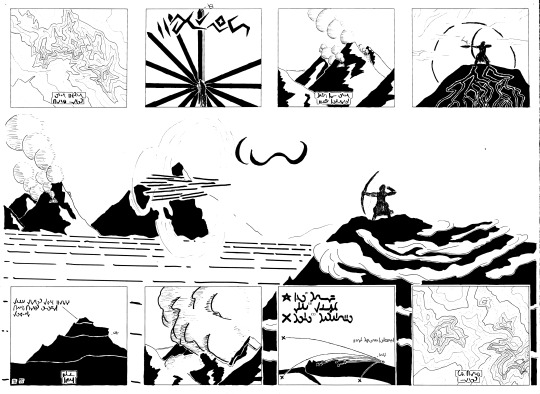
Urraiy-Luera, World Anchor
An explanation of each panel, from left to right:
1 - A topographic map of a mountain range annotated to have been sometime in the past.
2 - Urraiy-Luera's hand holding sweeping 16 arrows into the same space.
3 - A shot of the mountains in the top left of the 1st panel emitting plumes of smoke, similarly in the past and labeled as belonging to Form Glutton Gierrot.
4 - Urraiy-Luera silhouetted by the sun while drawing a bow, a root like pattern flowing down into the mountain. The bow is comprised of the head of an Adamant pickaxe broken from its haft which was further broken into the arrows.
Central 5th Image - Urraiy-Luera releasing the bow, sending the arrows off as a shotgun blast which has quickly caused a sonic boom from its speed and caused plumes of dust to emerge from the mountain they are standing on. Gierrot's mountain is visible as the destination of the arrows.
6 - A cutaway diagram of the mountain Urraiy-Luera was standing on, demonstrating a series of faults in the mountain from the recoil of the shot. Text explains that the peak of the mountain is quarried for the magical properties of the stone.
7 - A repeat of the third image showing a massive plume of dust kicked up by the impact of the arrows on Gierrot's mountain.
8 - A trajectory diagram of the arrows shot by Urraiy-Luera, showing one exiting the atmosphere and becoming unrecoverable, while another plunged far enough beneath the ocean crust to enter the asthenosphere. Several are marked as recovered, with each individual arrow recovered later being forged into legendary weapons.
9 - A map similar to the first showing mountains in roughly the same position with the exception of a pair in the middle, the two maps can be compared below:
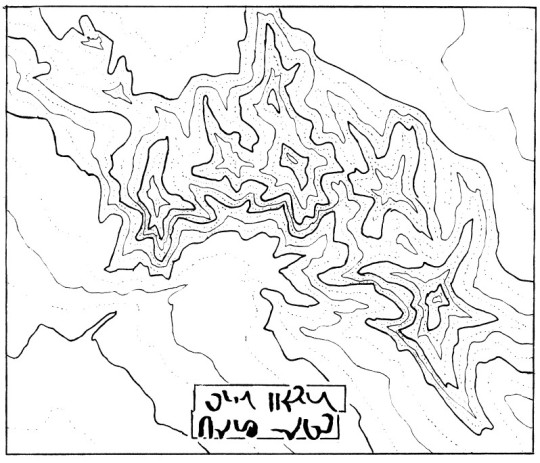
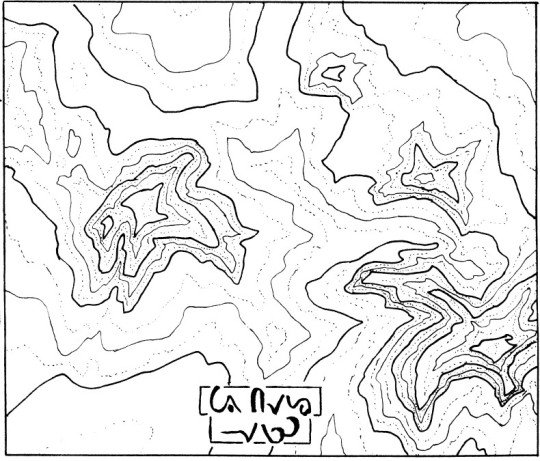
#fun fact: this is 100% based off of the bow from the Mahabarata that fires like 100 arrows at once#I'm pretty sure I've talked about Urraiy-Luera on this blog before but yeah#Also I made up a bunch of onomatopeia in my conlang to use on this map#so the text above the arrows on the main image reads as VRUM etc.#Anyways Urraiy-Luera hit this poor dragons mountain fortress with 16 Kinetic Orbital Strikes at point blank range
8 notes
·
View notes
Text

I love the way this chart is written because it implies that j is meant to be pronounced /c~ɟ~ʃ~ʒ~j/ in High Valyrian.
#linguistics#linguistic#languages#shitpost#linguist shitpost#lingblr#conlang#conlanging#constructed language#conlangs#high valyrian#game of thrones#a song of ice and fire#house of the dragon#hotd#got
36 notes
·
View notes
Text
Flauło ukiłoha'a șapukuru'ia ahijirinantu.
behold, the first sentence i've managed to create in this remastered conlang. let me break it down into a gloss:
ɸɬæu-lˤɔ uk-ɪlˤɔ-hæʔæ tsæ-pukuru=ʔɪæ æhɪ-jɪrɪ=nændu.
fire-CL.Wt eye-CL.Wt-PROP PERF-do.carefully=3P.INAN.SG N.PST-sense=1P.DU
"You and I watched/have finished watching the fire."
more details under the cut if interested
a very literal translation of this (just to get an idea of how things will be expressed in this language) would be something like:
"You and I sensed the fire, with the eye, carefully."
in this language, there is no individual verb for the senses. instead, the light verb jiri (sense) is used along with the body part associated with the sense attached with the proprietive morpheme (in this example sentence, the eye). the coverb pukuru (do carefully) in this example merely serves to express the concept of 'watching' something as opposed to just seeing it.
hopefully this is readable and the formatting didnt get all screwed up. of course this is all subject to change, i am still very early in the process of giving forms to all these morphemes so they are very likely to be altered here and there.
(glossing terms)
CL.Wt - Classifier (Water)
PROP - Proprietive
PERF - Perfective
INAN - Inanimate
N.PST - Near-past
#conlang#language#minecraft#mineblr#linguistics#if youve read the word classifiers correctly yes fire and eye are classified as water in this language 👍
26 notes
·
View notes
Text
After spending the week coding and inputting the first 100 vigesimal numerals (well I say numerals, the names of the numerals is probably more accurate) into tables on my private wiki, I am forcing myself to sit down this evening and make some decisions about how adverbs, adpositions, and conjunctions work in this lang so I can finish the main grammar article and go back to dictionary entries.
#conlang#as someone with dyscalculia it's probably playing with fire naming 77 what is essentially “Seventeen over Thrice Twenty”#but where is the fun and whimsy in replicating the numerical system /I/ am more used to every. single. time.
4 notes
·
View notes
Text
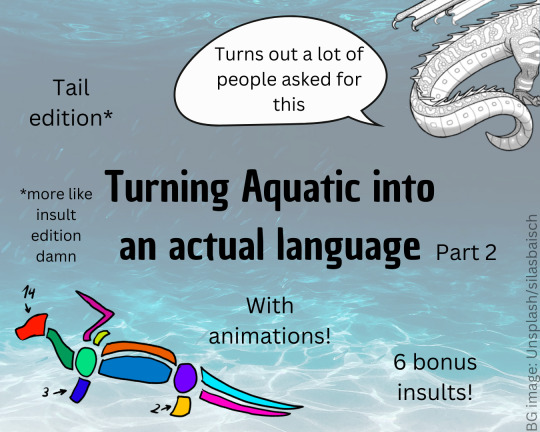




Tagging this and any previous/further parts as #buzzkill aquatic. Feel free to use that tag whenever you use my aquatic expansion in your own work (not mandatory)
1K notes
·
View notes
Note
If given the chance, would you develop the other languages mentioned in A Song of Ice and Fire?
Yep.
95 notes
·
View notes
Text
it feels pretty nice to actually have a main that i use lmao. hello everyone!
ive got a variety of noises for you to get my attention with, like cotton, candy, mal, or kim. most of the time if people call me something enough I'll start going by it, so be creative or I'm sending you to the bone shucking factory
i mainly use they/them, it/its, and she/her but I also have a list of neos so long i keep forgetting them. im a boy but im nonbinary but im the prettiest princess at the party bu–
i have a lot of ever-changing hyperfixations, so I'm not gonna list them, but my special interests (hyperfixations that have lasted over a year) are; Mega Man, Don't Starve, Bugsnax, Act! Addict! Actors!, Wings of Fire, Conlangs (i speak toki pona :D), and Linguistics in general!
im an adult you can be weird now, just know i wont post it publically bc there's no age limit on my blog. 90% of the stuff i say online are lies anyways so it's not like you can find me
17 notes
·
View notes
Note
This is the banner I made w ur language!! I hope it's legible :3

LOVE IT!!!!!
13 notes
·
View notes
Text
the only thing stopping me from developing bug conlang phonetics rn is grimm's home language aka the troupe's language being a pidgin/creole esq mishmash with a stupid amount of loanwords and i'm not dealing with that
#it's mostly two very similar languages smooshed together with some little things added later#technically a pidgin bc it's no one's native language but it's had centuries to develop so considering that more like a creole#you could argue that each new generation of grimm is a native speaker but it's really the same guy so. no. not his native language either#average hallownestian would be able to understand parts of it but then parts would be incomprehensible#i could do a different hypothetical hk language but i'm not that interested/not that deep in this hole. yet#a fire sets alight#hk#this can go into the series tag bc Lore#yourebabblingjulle#i also looked at my most noteworthy beginnings of a conlang for headworld first time in years i'm blaming ashe for this#i'm going to dig up certain notebooks the script i made is nice and i want to look at it again#but am i enough of a masochist to deal with fictional grammar atm. to be seen
3 notes
·
View notes